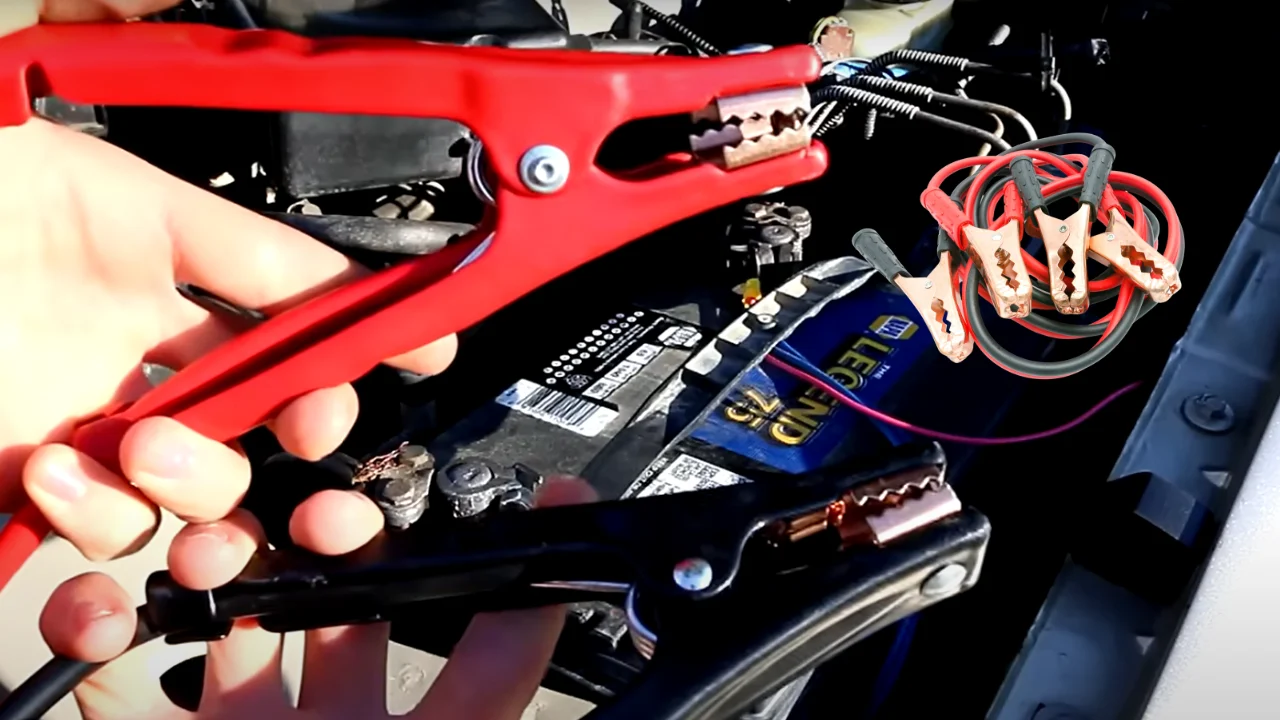We’ve all been there: you’re ready to go, but your car just won’t start. Learning how to jump start a car with cables can save you time and stress—especially since over 69% of roadside emergencies involve battery issues. It’s a simple process, but knowing the right steps can make all the difference. Uncover if a jump starter can fully recharge your car battery in our article, Can a Jump Starter Charge a Battery?.
Believe it or not, the average car battery lasts about three to five years, depending on usage and climate. If your battery is older, you’re more likely to need a jump, especially after leaving the headlights on for just 30 minutes! Let’s get you back on the road quickly and safely.
Quick Look
To jump start a car with cables, connect the red clamp to both positive terminals, the black to the charged battery’s negative, and the other black to the metal on the dead car. Start the working car, then the dead one.
Can I jump-start a car by myself?

Yes, you can jump-start a car by yourself, provided you have another vehicle with a charged battery or a portable jump starter. First, position the cars close enough for the jumper cables to reach both batteries, but ensure they don’t touch.
Turn off both vehicles, set the parking brakes, and connect the cables in the correct order: red to positive terminals black to a metal surface on the dead car. If using a portable jump starter, follow the manufacturer’s instructions. Always exercise caution, keep the cables away from moving parts, and drive for 20-30 minutes afterwards to recharge the battery.
Tools Needed
When you’re dealing with a dead battery, having the right tools on hand can make all the difference. Trust me, it’s not a complicated process, but you’ll need a few essentials to get things going. Here’s what you’ll need to safely and effectively jump-start your car.
- Jumper Cables: Ideally, these should be at least 10 feet long for better reach and 6-gauge or thicker to ensure they carry enough current.
- Another Vehicle or Portable Jump Starter: A functioning car with a charged battery is the most common choice, but a portable jump starter can be a lifesaver, especially when other vehicles aren’t available.
- Wire Brush: Use this to clean off any corrosion from the battery terminals, which can boost the battery’s efficiency by up to 30%.
- Protective Gear: Gloves and safety glasses help prevent injuries when dealing with battery acid or sparks.
- Car Owner’s Manual: This can be useful if your battery is in an unusual location, like under the trunk or back seat.
Step-by-Step Guide: How to Jump Start a Car with Cables?
Jump-starting a car isn’t as tricky as it might seem. With the right approach, you can be back on the road in just 15 minutes. Follow these steps closely for a safe and quick jump.
Step 1: Position the Vehicles
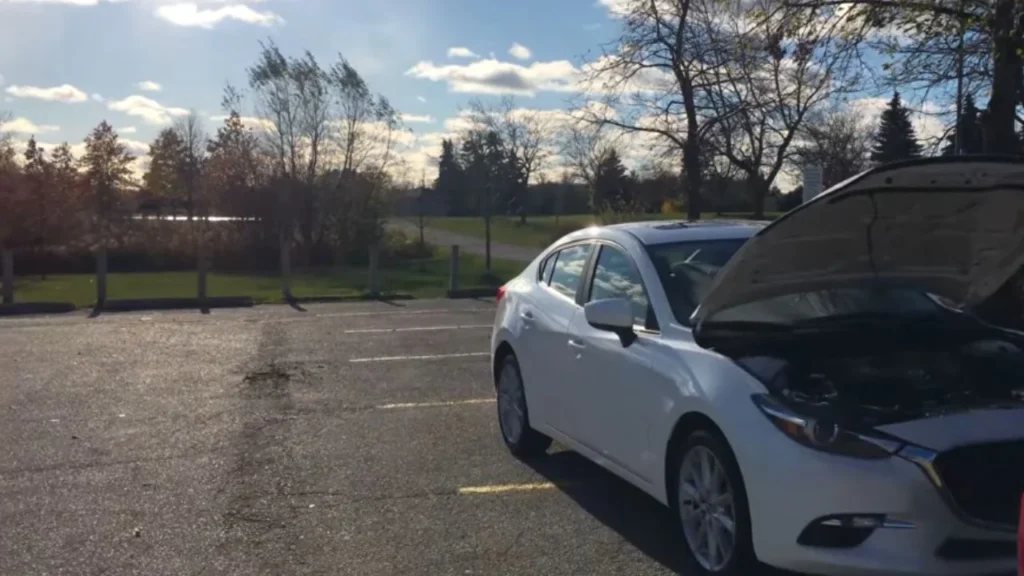
Park the cars about 18 inches apart, ensuring they don’t touch. Turn off both cars and apply the parking brakes. This prevents any unexpected movements while jump-starting.
Step 2: Locate and Identify Battery Terminals
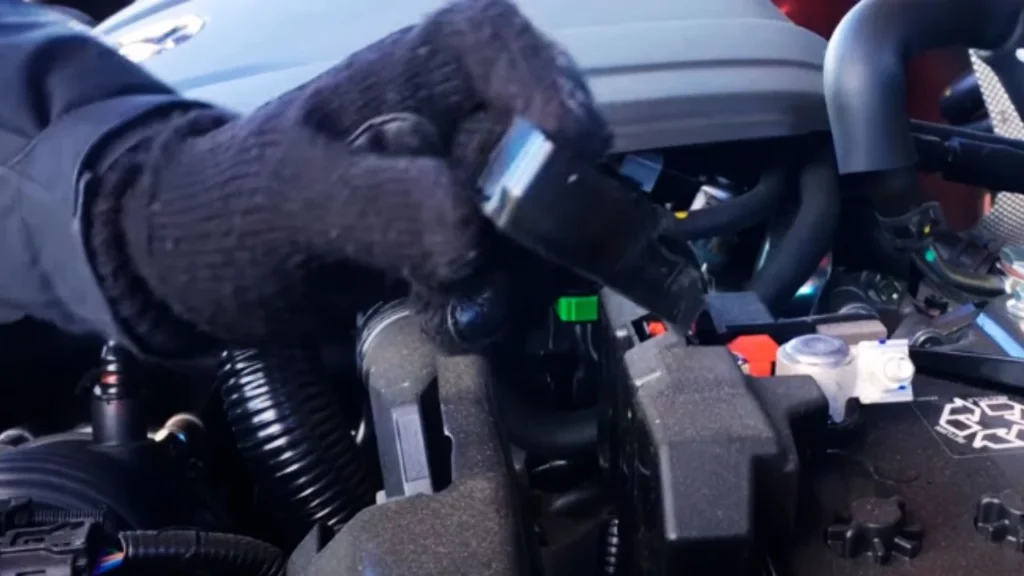
Look for the battery under the hood, often near the engine. Identify the positive (+) and negative (-) terminals. Over 90% of cars have these clearly marked for easy identification.
Step 3: Connect the Jumper Cables

Attach the red clamp to the dead battery’s positive terminal. Connect the other red clamp to the working battery’s positive terminal. Then, connect the black clamp to the working battery’s negative terminal, followed by the last black clamp to a metal surface on the dead car.
Step 4: Start the Cars
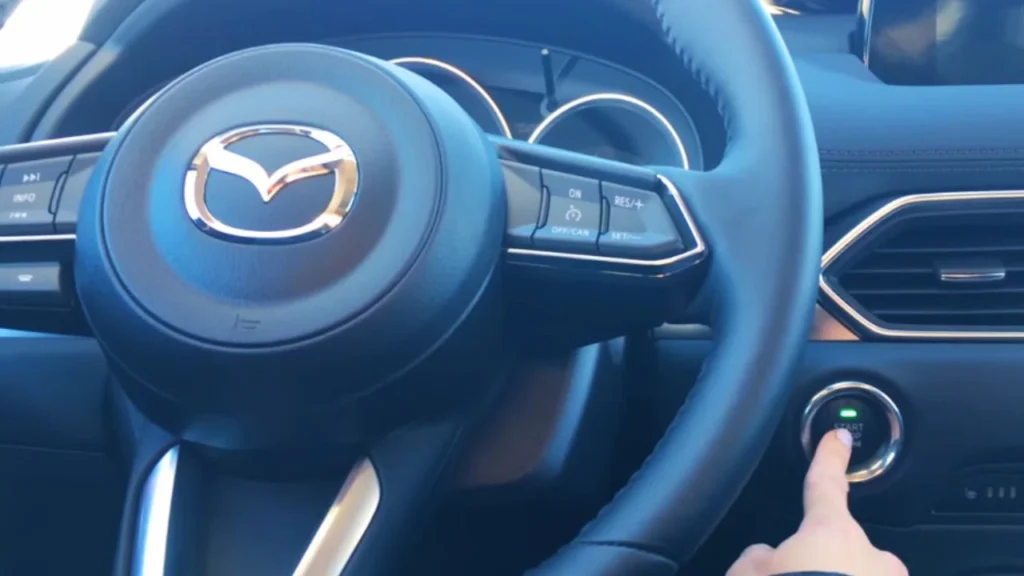
Start the working car and let it run for at least 5 minutes. Then, try starting the car with the dead battery. If it doesn’t start, give it a couple more minutes to charge.
Step 5: Disconnect the Cables
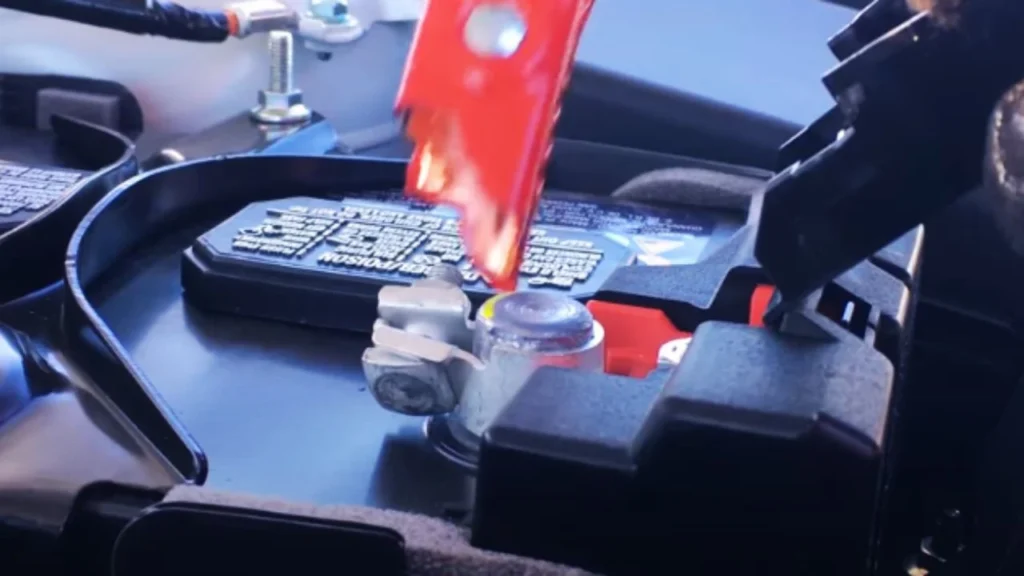
Remove the cables in reverse order: black clamp from the grounded metal, black from the working battery, then red from the working battery, and finally red from the dead battery. Always keep the clamps from touching.
Step 6: Let the Jumped Car Run

Keep the jumped car running for 20-30 minutes to recharge the battery fully. If possible, drive it around to help the alternator charge it faster. Explore the advantages of a dual-purpose device in our article, Jump Starter and Power Bank.
Post-Jump Care
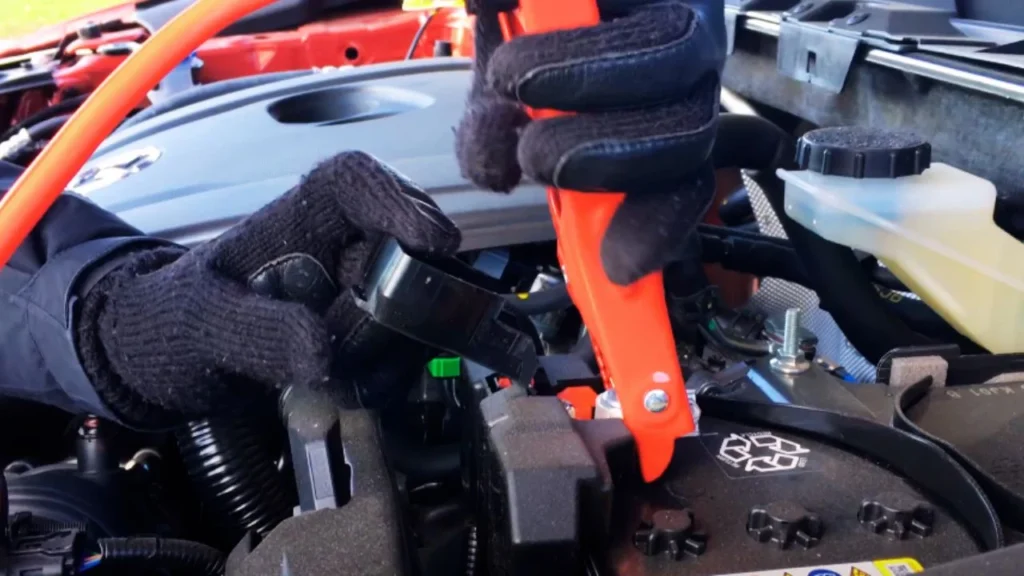
Now that your car’s running again, it’s time to let it recover. The battery needs some extra love to get back to full strength. Drive around for at least 20-30 minutes to let the alternator charge the battery properly.
If the jump-start was a bit of a struggle, it might be a sign of a deeper issue. About one in three jump-starts could indicate an underlying battery problem, like corrosion on the terminals. Have it checked out if the car struggles to start again.
To keep your battery healthy, consider a quick inspection every three months. Checking for corrosion and ensuring the connections are tight could save you from unexpected battery trouble later.
Troubleshooting Tips
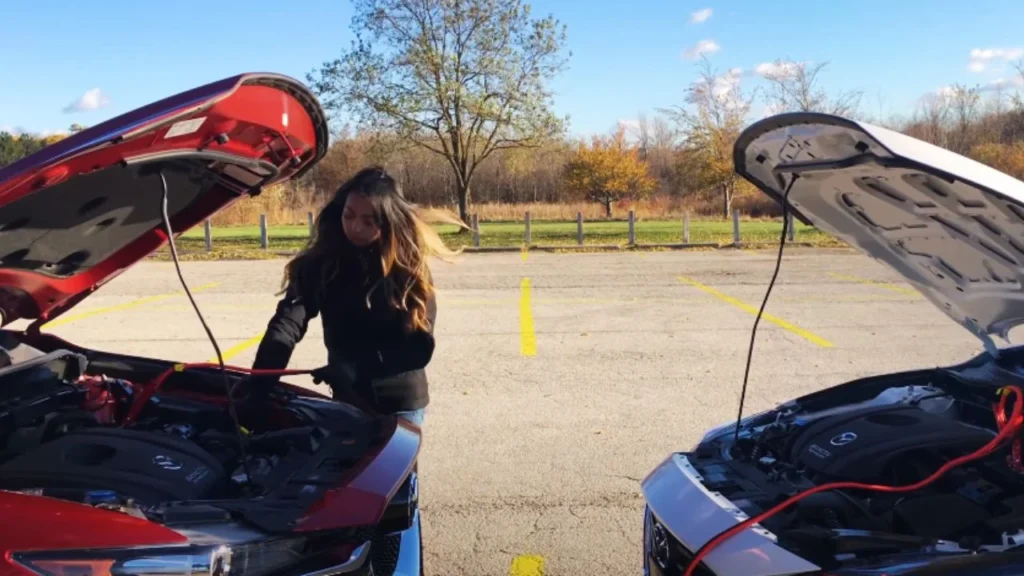
It can be frustrating when your car still won’t start after a jump. But don’t worry—you’re not alone, and it doesn’t always mean an expensive repair is necessary. In fact, about 70% of jump-start issues can be solved with a few adjustments. Let’s dive into some common reasons why a jump might fail and simple fixes to get you back on the road.
1. Double-Check Cable Connections
Even a small misalignment can prevent your car from starting. Make sure each clamp is connected to the proper terminal: red to positive (+) and black to negative (-). If the clamps are loose or not gripping firmly, the electricity won’t flow as needed. Recheck them, and remember that roughly 70% of jump failures result from poor connections.
2. Give It More Time
Sometimes, a completely drained battery needs more than a quick jump to get back to life. If your car doesn’t start immediately, let the working car run for an extra 5-10 minutes. This helps recharge a battery that has dropped below 12.2 volts. Patience can make a big difference here.
3. Inspect for Corrosion
Corrosion on battery terminals can disrupt the flow of electricity. A layer of green or white buildup can block the current, acting like insulation. If you spot this, clean it off using a brush or cloth, making sure the terminals are shiny and clean. This step alone can resolve up to 50% of battery-related issues.
4. Consider the Battery’s Age
If your battery is more than three years old, it might be nearing the end of its life. Older batteries often struggle to hold a charge, especially if they’ve been completely drained. If you’ve tried everything and still have no luck, it could be time for a replacement.
5. Seek Professional Assistance if Necessary
When all else fails, don’t hesitate to contact a professional mechanic. Persistent problems may indicate a deeper issue, like a faulty alternator, blown fuse, or damaged starter. Getting a thorough check can help pinpoint the problem quickly. Find out if Teslas have the capability to jump-start other cars in our article, Can a Tesla Jump Start a Car?.
Safety Guide for Jump-Starting a Car

Jump-starting a car can be safe and straightforward if you follow some essential precautions. Taking the proper steps helps prevent injury and damage to your vehicle. Here’s what you need to know to ensure a safe and successful jump-start process.
Wear Protective Gear: Use gloves and safety glasses to protect against battery acid and sparks.
Park Properly: Position the cars close but without touching, and apply parking brakes on both vehicles to prevent movement.
Check for Battery Damage: Inspect the batteries for cracks, leaks, or corrosion. If the battery is damaged, do not attempt to jump-start.
Connect Cables in the Correct Order: Always connect the red (positive) cable first to the dead battery, then to the charged one. Next, attach the black (negative) cable to the charged battery’s negative terminal, and the other black end to a metal part of the dead car’s engine. Never attach it directly to the dead battery.
Keep Metal Clamps from Touching: Ensure the metal clamps do not touch each other during the process, which can cause sparks or a short circuit.
Avoid Engine Parts: Keep cables away from moving engine parts and fan belts to prevent entanglement.
Disconnect Safely: Remove cables in reverse order, starting with the black clamps, and then the red ones.
Charge the Battery: Let the jumped car run for at least 20-30 minutes to recharge its battery safely.
Dos:
- Wear safety gear.
- Connect cables correctly.
- Keep clamps separated.
- Inspect the battery first.
- Follow proper cable order.
Don’ts:
- Touch clamps together.
- Attach to the negative terminal.
- Jump a damaged battery.
- Skip reading the manual.
- Let cables touch the engine.
Final Words
Jump-starting a car may seem daunting at first, but it’s actually pretty simple. In fact, it takes just about 5-10 minutes if you follow the steps correctly. Now that you know how to jump start a car with cables, remember to always keep a set in your trunk. Trust me, you’ll thank yourself later, as roughly 1 in 3 drivers encounter a dead battery at least once. Be prepared and stay on the road safely!
Learn if Walmart can assist with car jump-starts in our article, Can Walmart Jump Start a Car?.
